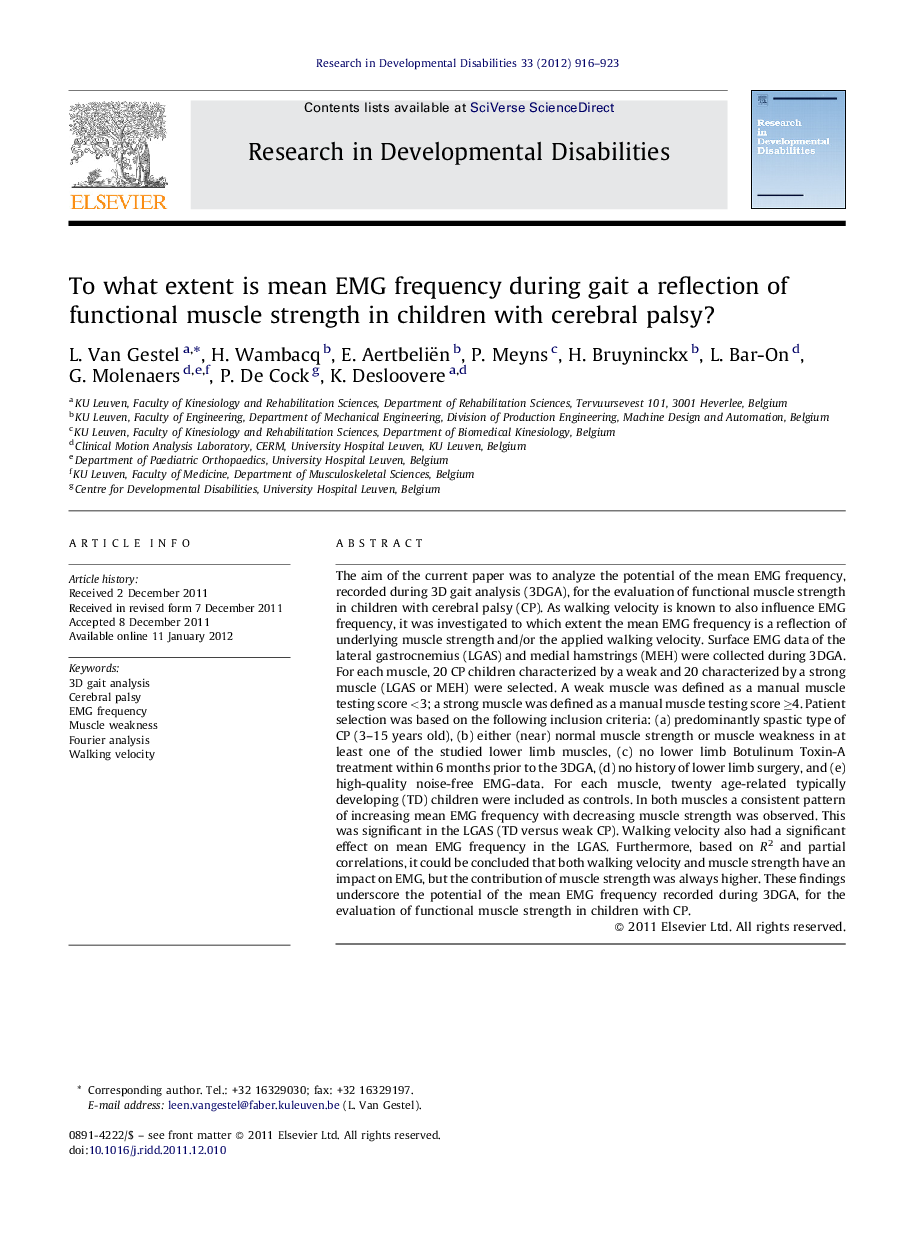| کد مقاله | کد نشریه | سال انتشار | مقاله انگلیسی | نسخه تمام متن |
|---|---|---|---|---|
| 371551 | 621929 | 2012 | 8 صفحه PDF | دانلود رایگان |

The aim of the current paper was to analyze the potential of the mean EMG frequency, recorded during 3D gait analysis (3DGA), for the evaluation of functional muscle strength in children with cerebral palsy (CP). As walking velocity is known to also influence EMG frequency, it was investigated to which extent the mean EMG frequency is a reflection of underlying muscle strength and/or the applied walking velocity. Surface EMG data of the lateral gastrocnemius (LGAS) and medial hamstrings (MEH) were collected during 3DGA. For each muscle, 20 CP children characterized by a weak and 20 characterized by a strong muscle (LGAS or MEH) were selected. A weak muscle was defined as a manual muscle testing score <3; a strong muscle was defined as a manual muscle testing score ≥4. Patient selection was based on the following inclusion criteria: (a) predominantly spastic type of CP (3–15 years old), (b) either (near) normal muscle strength or muscle weakness in at least one of the studied lower limb muscles, (c) no lower limb Botulinum Toxin-A treatment within 6 months prior to the 3DGA, (d) no history of lower limb surgery, and (e) high-quality noise-free EMG-data. For each muscle, twenty age-related typically developing (TD) children were included as controls. In both muscles a consistent pattern of increasing mean EMG frequency with decreasing muscle strength was observed. This was significant in the LGAS (TD versus weak CP). Walking velocity also had a significant effect on mean EMG frequency in the LGAS. Furthermore, based on R2 and partial correlations, it could be concluded that both walking velocity and muscle strength have an impact on EMG, but the contribution of muscle strength was always higher. These findings underscore the potential of the mean EMG frequency recorded during 3DGA, for the evaluation of functional muscle strength in children with CP.
► Lack of tool for evaluation of functional muscle strength in cerebral palsy (CP).
► Mean EMG frequency = result of underlying muscle strength and/or walking velocity?
► Lateral gastrocnemius and medial hamstrings studied during walking in CP and healthy.
► Both muscle strength and walking velocity seemed to influence mean EMG frequency.
► Contribution muscle strength to mean EMG frequency > contribution walking velocity.
Journal: Research in Developmental Disabilities - Volume 33, Issue 3, May–June 2012, Pages 916–923